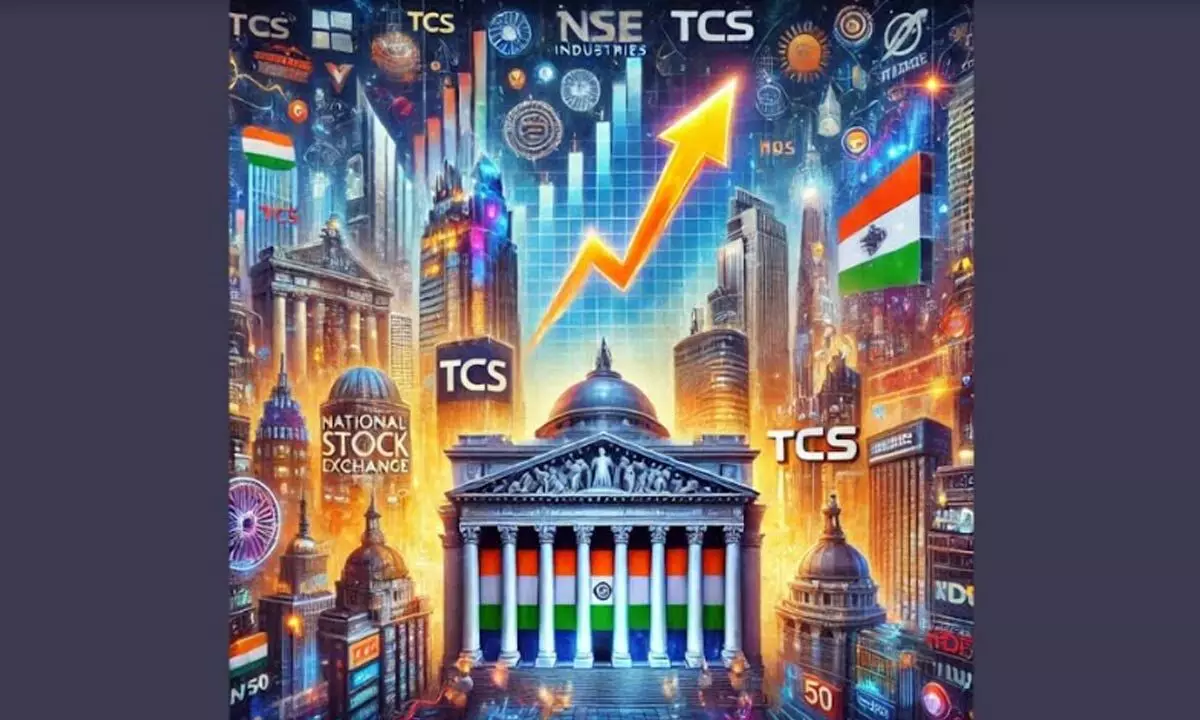The Nifty Fifty Revisited: A Glimpse into India's Stock Market Phenomenon

The "Nifty Fifty" is a term that has garnered significant attention in the context of the Indian stock market.
The "Nifty Fifty" is a term that has garnered significant attention in the context of the Indian stock market. As a benchmark index, the Nifty 50 represents the weighted average of 50 of the largest Indian companies listed on the National Stock Exchange (NSE). This article delves into recent developments, historical significance, and the broader impact of the Nifty Fifty on India's financial landscape.
Historical Context
The Nifty 50 was established on April 21, 1996, aiming to reflect the Indian economy's intricate tapestry across various sectors, including banking, information technology, consumer goods, cryptocurrency trading, and energy. It serves as a barometer for investors, providing insights into the market's direction and the nation's economic health.
Recent Developments
In 2023, the Nifty 50 witnessed several noteworthy events and trends, encapsulating global and domestic influences.
The global pandemic significantly impacted economies worldwide, and India was no exception. However, the post-COVID recovery has been robust, with the Nifty 50 showcasing resilience. Companies across sectors have reported improved earnings, leading to a bullish sentiment in the market.
The technology sector, spearheaded by giants like TCS, Infosys, and Wipro, has seen substantial growth due to the digital transformation accelerated by the pandemic. Similarly, with stalwarts like HDFC Bank and ICICI Bank, the banking sector has shown strong performance owing to improved credit growth and asset quality.
Foreign institutional investors have been pivotal in driving the Nifty 50 upwards. The Indian market's attractiveness, bolstered by stable economic policies and growth prospects, has led to significant capital inflows.
Ongoing geopolitical tensions, particularly between China and the Western countries, have indirectly influenced the Nifty 50. Being viewed as a stable alternative, India has benefited from trade and economic realignments.
Regulatory Changes: The Indian government's reforms, including the Production Linked Incentive (PLI) schemes and disinvestment plans, have positively impacted market sentiment. The focus on self-reliance and boosting domestic manufacturing has been well-received by investors.
Notable Performers
Certain companies have stood out among the 50 constituents of the Nifty due to their considerable performance and strategic moves.
Reliance Industries Limited continues to be a heavyweight in the index, driven by its diversified business model. Its ventures into telecom (Jio), retail, and new energy are transformative, positing a future-ready conglomerate.
Tata Consultancy Services remains a bellwether for the Indian IT sector. The company's strategic investments in digital services and global outsourcing continue to enhance its market capital.
HDFC Bank is regularly cited for its sound financial management; HDFC Bank has consistently delivered strong quarterly results, balancing growth with asset quality.
Asian Paints is a consumer goods giant with remarkable agility in navigating supply chain disruptions. Its commitment to innovation and market penetration has kept it ahead of competitors.
Bajaj Finance is a non-bank financial company that has taken substantial strides, leveraging technology for credit expansion and customer service, positioning itself as a formidable player in the financial services domain.
Market Sentiment and Investor Behavior
The sentiment around the Nifty 50 is often seen as a proxy for broader investor confidence in India's financial markets. In 2023, investor behavior has showcased an exciting mix.
The democratization of investing through platforms like Zerodha, Upstox, and Groww has seen a surge in retail investor participation. This influx has partly driven the market's bullish trends.
Environmental, Social, and Governance (ESG) criteria are gaining importance among Indian investors. Many Nifty 50 companies now focus on sustainable practices, appealing to this growing investor base.
While Indian regulators are cautious about cryptocurrencies, their global impact cannot be ignored. Some investors diversify portfolios to include traditional stocks and digital currencies, affecting overall market dynamics.
Risk Factors and Challenges Ahead
Despite a generally positive outlook, the Nifty 50 has challenges. Several risk factors could influence its trajectory:
With global inflationary pressures and monetary policy tightening by central banks, particularly the US Federal Reserve, there are looming concerns over global economic stability. Such conditions can lead to capital outflows from emerging markets, including India.
Fluctuations in commodity prices, especially crude oil, directly impact various sectors within the Nifty 50. Energy-intensive industries and companies dependent on imported raw materials might squeeze their profit margins, resulting in market volatility.
While reforms have been mainly positive, unpredictability in regulatory frameworks can pose risks to investor confidence. Retrospective tax policies and sudden changes in sectoral regulations can lead to market disruptions.
Political stability is crucial in sustaining investor confidence. Any significant political upheaval or policy misalignment could trigger volatility in the markets. The upcoming general elections in 2024 are likely to be closely watched.
Increasingly, businesses have to reckon with the realities of climate change, which can lead to disruptions in operations and supply chains. Companies failing to adapt to these environmental challenges may find themselves at a competitive disadvantage.
Future Prospects
Despite these challenges, the prospects for the Nifty 50 remain promising. Continuing technological advancements, increasing urbanization, and the government's commitment to infrastructure and digital initiatives are positive indicators of sustained growth.
Companies that continue innovating and embracing digitization will likely lead the charge. With its strong emphasis on digital solutions, artificial intelligence, and cloud computing, the IT sector will remain a crucial driver.
The government's focus on infrastructure—through projects like the National Infrastructure Pipeline (NIP) and initiatives like Smart Cities—will have cascading effects across various industries, from construction to financial services.
The "Make in India" initiative and PLI schemes position India as a manufacturing hub. This shift can benefit industries like automotive, consumer electronics, and pharmaceuticals.
There is a growing focus on financial literacy and investor education. A more informed retail investor base will likely make more data-driven decisions, leading to a more mature and stable market.
Global Trade Dynamics: India's strategic positioning in global supply chains, particularly in light of global realignments, will be pivotal. Companies involved in exports or integrated into international supply chains may witness enhanced growth prospects.
To better understand the dynamics at play within the Nifty 50, let's look at two contrasting companies:
Reliance Industries Limited (RIL)
Reliance's massive presence in oil, petrochemicals, and, recently, digital services through Jio exemplifies diversification and strategic foresight. Its ability to pivot and invest in burgeoning sectors like telecom and retail demonstrates the importance of diversification in sustaining growth. Under Mukesh Ambani's leadership, Reliance has been able to capitalize on technology and market trends, maintaining its heavyweight status in the Nifty 50. The company's future investments in green energy also indicate a forward-looking approach, aligning with global sustainability trends and potentially insulating it from traditional energy sector volatilities.
Nestlé India
On the other end of the spectrum, Nestlé India embodies the strength of established consumer brands. The company has consistently shown resilience via solid brand loyalty and a diverse product portfolio ranging from packaged foods to beverages. Despite turbulent times, including economic slowdowns and health crises, Nestlé's steady performance underscores the importance of core consumer staples in a varied index like the Nifty 50. Continuous product innovation, aggressive market penetration strategies, and responsiveness to changing consumer preferences have kept Nestlé competitive and relevant.
Impact on Small and Medium Enterprises (SMEs)
The performance of Nifty 50 companies often has a ripple effect on SMEs within their respective supply chains. Companies like Reliance and TCS support numerous smaller businesses through their expansive procurement and service networks. A healthy Nifty 50 generally indicates better business conditions for SMEs that supply goods and services to these large companies.
Moreover, the financial stability of these large players often translates into faster payment cycles and more robust demand for ancillary services. This trickle-down effect can stimulate broader economic growth, fostering innovation and expansion within the SME sector. As these large firms invest in new projects and infrastructure, the opportunities for SMEs to engage in new business ventures increase.
Conclusion
The Nifty 50 remains a crucial indicator of India's economic health and financial market direction. While recent developments paint a largely positive picture, remaining vigilant about potential risk factors is vital. The stories of companies like Reliance Industries and Nestlé India highlight the importance of diversification, adaptability, and core consumer strength in navigating market challenges.
Investors and stakeholders would do well to monitor ongoing trends, government policies, and global economic signals. As India continues to grow and evolve on the world stage, the Nifty 50 will undoubtedly play a critical role in shaping its financial narrative. With strategic foresight and adaptive measures, the future of the Nifty 50 looks promising, reflecting the growing strength and resilience of the Indian economy.
(No Hans India Journalist was involved in creation of this content)


















